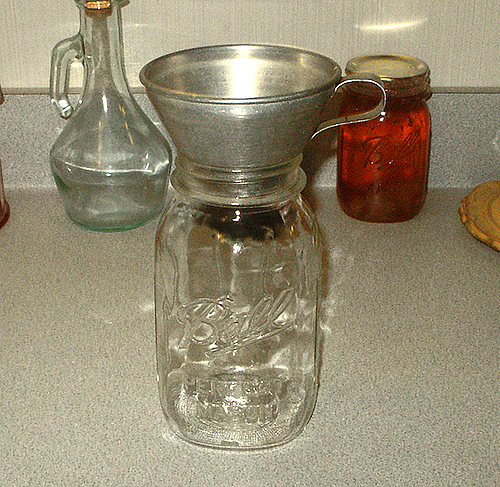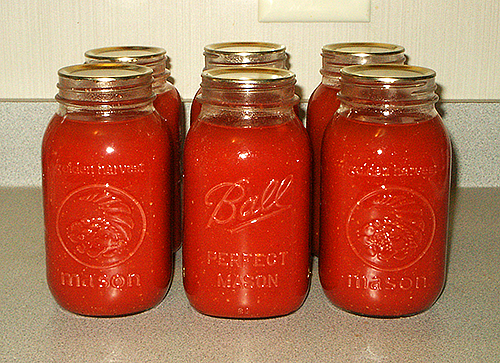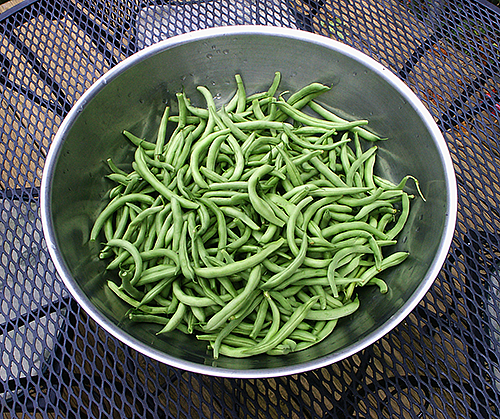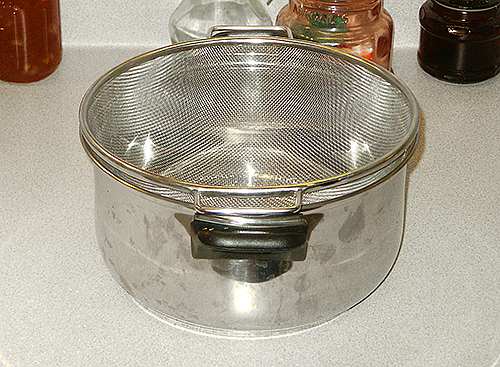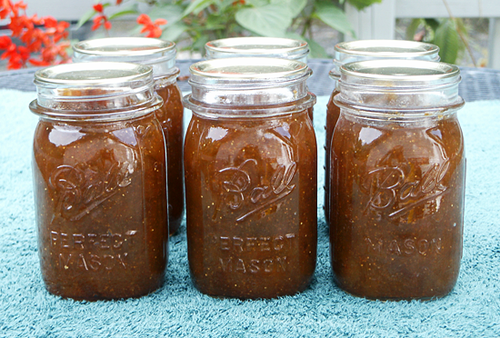 |
| Fresh homemade fig preserves - yummy! |
This time it is fig preserves; they are quite easy to make. I am lucky, I have a fig bush in the back garden so obtaining the figs was easy and the price was right, free. Slice off the stems if any and slice the figs into appropriate size slices. For the smaller figs you may be able to just quarter them; however, for the larger figs I had, I had to slice them a bit more than quarters so the pieces weren't too large. I then added sugar in a ratio of 3:4 sugar to figs. I have seen recipes that call for a ratio of 1:2 to a ratio of 1:1. Changing the ratio will affect the sweetness and one has to be careful they don't create sugar crystals in the gel which will end up as hard lumps. Figs don't require one to add any pectin to the mix as they will gel quite nicely with the pectin contained in the fruit.
I poured the sugar over the figs and then place the mixture in the refrigerator for a day; the sugar will draw the juice from the figs. Cook the mixture of sugar and figs slowly for about three to four hours, the time is dependent on the quantity and I think I cooked them for at least five. Near the end you have to be very careful or the figs will stick to the bottom of the pot and the entire batch of preserves will be ruined; the entire batch will smell and taste burnt. You want to cook them slowly, trying to speed up the process will result in burnt preserves. You basically have to watch the pot and stir it very often. You want to bring the temperature up on the mixture and stir it as the juice stars to gel. The amount of time will depend on how much you are cooking; it is a bit of an art to learning when they are ready to bottle. If you overcook them, you may end up with a preserve so thick you can not remove them from the jar.
To store for future use, I recommend purchasing glass Kilner jars. Wash the jars in hot water with a liberal amount of washing-up liquid. Then sterilise the jars in boiling water for several minutes to make sure you kill any little microbes that could cause spoilage. Carefully pour the preserves into the hot jars using a wide metal funnel that has also been sterilised in the boiling water. Leave a space at the top of the jar. While you are filling the jar, sterilise one of the sealing lids in the boiling water; place the lid on top and then screw the band down snug, but don?t over tighten. Allow the jars to cool, check to make sure each lid sealed properly and then remove the bands.



